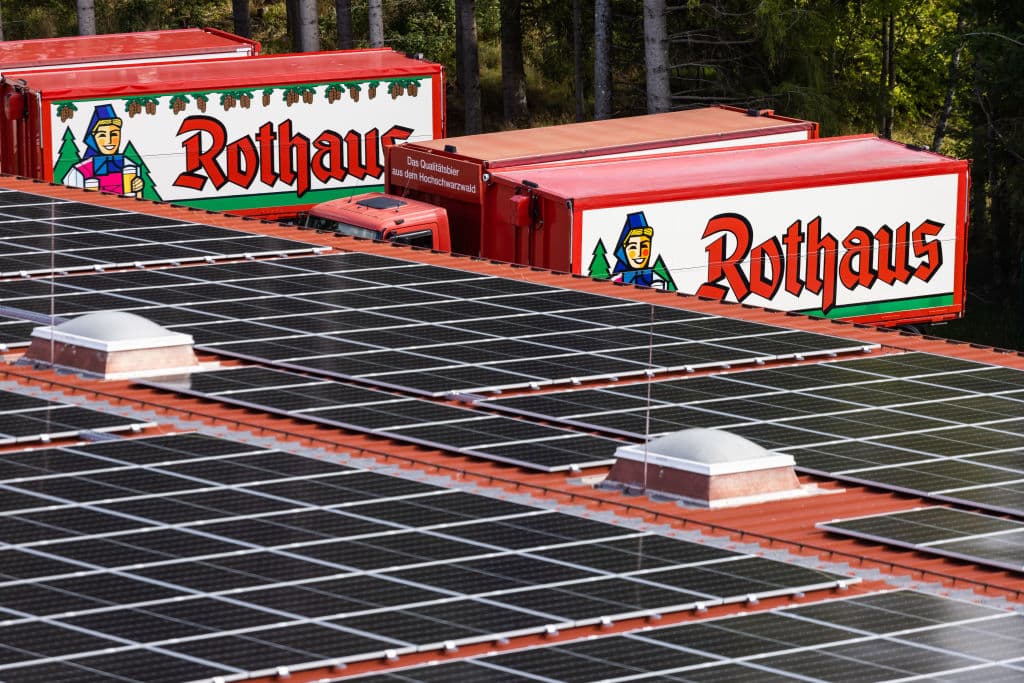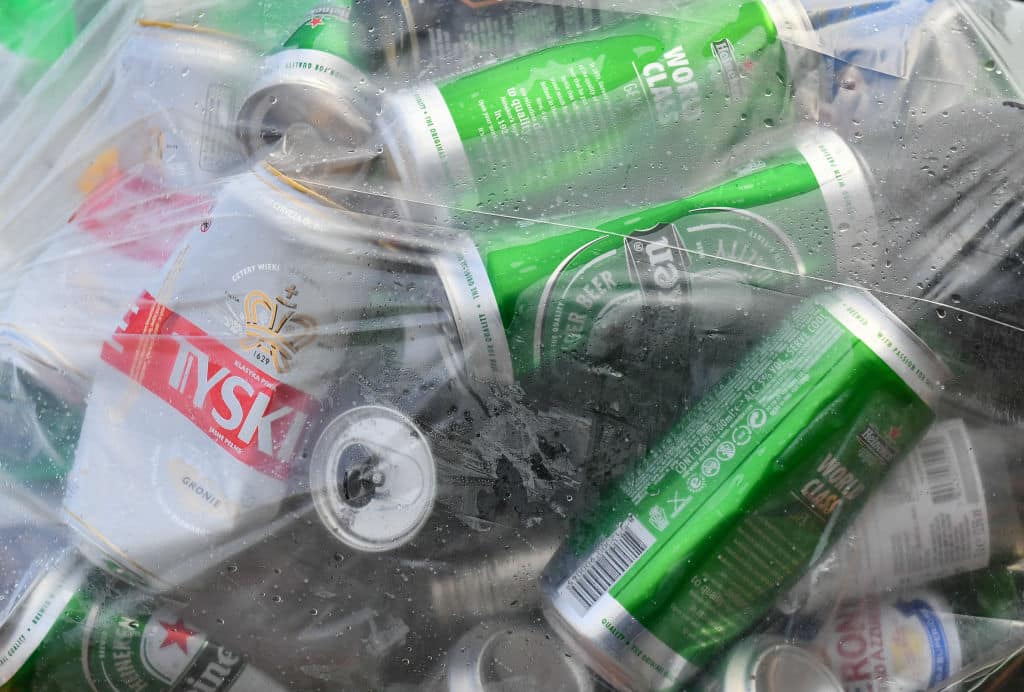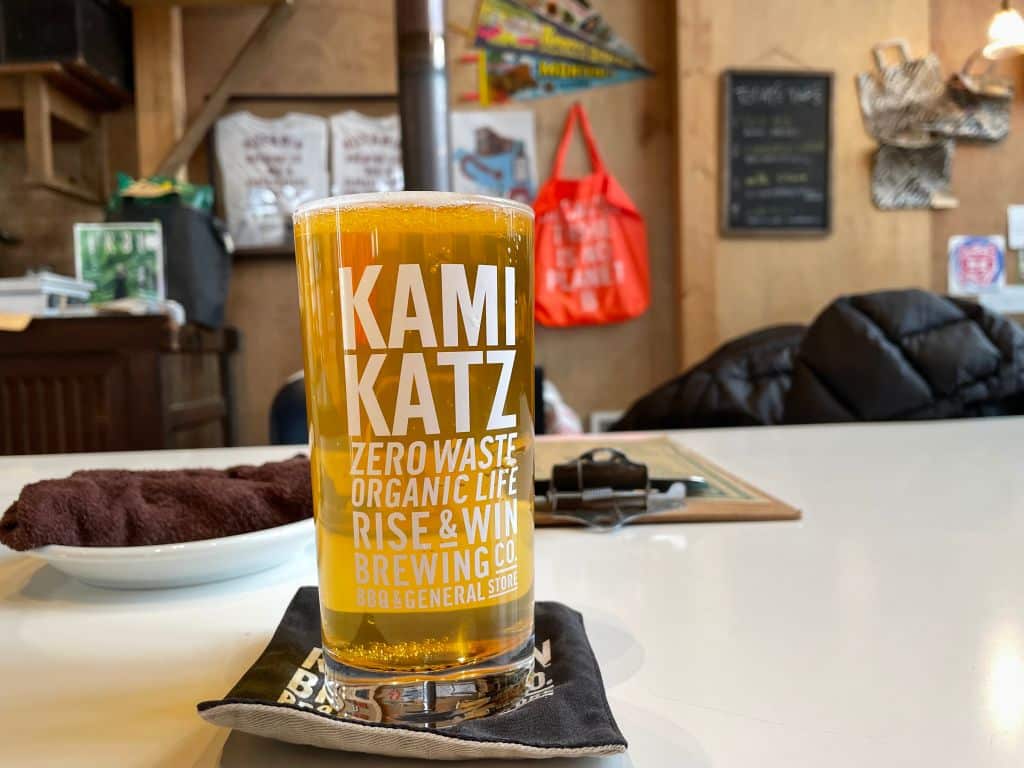Products You May Like
How do you pick the greenest beer off the shelf?
Unlike wine – which has a lot more regulations and certifications that make purchasing a sustainable bottle more straightforward – beer doesn’t have universal unique certifications or labels to indicate their sustainability efforts. Some smaller initiatives are taking place – Iowa launched the Iowa Green Brewery Certification in 2017, for one – but choosing an eco-friendly beer usually requires more attention to the practices of individual breweries.
To maintain your sustainability streak, you don’t need to give up beer (it is the most popular alcohol in the US, after all). Plenty of large and small breweries alike are addressing sustainability in their practices and there are plenty of ways to cut down on your beer-related impact at home.
Purchase From Breweries With Sustainable Practices

Beer-brewing is an involved process. It requires a lot of grain, energy, and water, and leaves a lot of waste in its wake. It requires malting the grain (usually barley) by steeping, germinating, and drying it, then mashing it to create the wort (basically unfermented beer) before boiling, fermenting, and bottling. All over the world, breweries are addressing the environmental impact of each of these production stages: a great reason to buy their brews over others!
A study conducted by the Oregon Department of Environmental Quality found that the beer drunk in the state each year was equivalent to the greenhouse gas emissions of
CO2 isn’t the only byproduct of brewing. Thirty-nine million tons of spent grain are produced worldwide by breweries every year. While often treated as waste, this byproduct still has a high nutritional value. Instead, some breweries are sending their spent grain to farms, where they’re used as animal feed.
For brewers, water is also an important resource (after all, beer is 95% water). Depending on the efficiency of the process, as much as 10 gallons of water might be used to produce only one gallon of beer. Among the breweries addressing their water usage, Bear Republic – one of the most water-efficient breweries in the country – has achieved a 3.5:1 ratio of water to brewed beer. To combat water scarcity, Argentina’s Antares brews their Átlantica beer using saltwater, and others are even using treated wastewater. The Village Brewery in Calgary is employing innovative technologies to remove all impurities and recycle water, and Stockholm’s New Carnegie Brewery saw great success with their PU:REST pilsner made from recycled sewage water.
Other producers are addressing sustainability from the ground up, starting with the grains themselves. The Oregon DEQ also found that the growing and processing of raw materials for beer contributed 22% to its carbon footprint. Breweries following organic practices bypass the use of fertilizers and pesticides for their grains, which pollute nearby ecosystems and are toxic to vital species. Dogfish Head sources grain from regenerative farming operations, and partnered with Patagonia Provisions this year to create a pilsner made with the perennial grain (meaning it can be harvested year after year) Kernza, which protects soil and works as a carbon sink.
Apart from these large-scale producers, smaller breweries near you might also be adhering to sustainable practices. The Great Lakes Brewing Company in Cleveland, Ohio, for one, founded the nonprofit Burning River Foundation – named after the famous Cuyahoga River Fire in 1969 – which works to protect freshwater resources. Many breweries also donate portions of their proceeds to environmental nonprofits, like Blue Point Brewing Company, who has partnerships with different environmental organizations in the NYC region and uses their proceeds to support clean water initiatives and oyster reef protection. Finding sustainable breweries near you just requires some research. Some regions might make it easier by identifying sustainable businesses for you; Denver has the Certifiably Green Denver sticker, placed on businesses that earned the environmental certification, including breweries.
Enjoy Local Beer
The recent boom in craft breweries has made buying quality local beer a feasible option all over the country. According to the Brewers Association, more than 9,000 breweries operated in the United States in 2021 – a 6% increase from 2020. With craft breweries in every state, you’re bound to find something closer to home than big-name brands.
When choosing your brew, think about the “food miles” of beer – that is, the distance the product must travel to reach the bar or your home, encompassing every stage from growing, to brewing, to distributing. When possible, aim for hyper-local beer brewed within 100 miles.
Choose Draft Beer

When you’re out at your local beer garden or brewery, enjoy your drink in a glass rather than a can. Skip the waste (since we know that most recycles never end up getting recycled) by asking what beers are on draft. This isn’t possible everywhere, unfortunately; in Utah, for example, beers with over 5% ABV (alcohol by volume) cannot be sold on tap and must be packaged.
Opt for Kegs or Growlers
For parties with a long guest list, ditch the packaging entirely and try a keg instead. Getting a keg no longer limits you to mainstream beer! Some stores and breweries now offer kegs for all kinds of unique and craft beers. Choose a keg based on the size of your gathering: a half-barrel of 15 gallons, or a six-barrel of 5 gallons.
If your choice brewery doesn’t offer kegs, they might offer refillable growlers: large glass jars that can be filled over and over again. Find out what breweries in your area offer this option; some states or regions might have online resources to find locations, like the Colorado Brewery List, which has a map of growler-friendly breweries.
Sustainable Packaging
Pick your brews based on packaging too. Aluminum cans are preferable to glass, which takes more energy to produce (unless it’s recycled glass). Choose loose cans if possible – like the build-your-own packs available in many stores – or cardboard boxes to avoid those little plastic rings. The Alchemist, a brewery in Stowe, Vermont, has ditched plastic six-pack rings for a compostable, biodegradable alternative made by E6PR, which more than 500 breweries around the world are using.
If you can’t avoid plastic rings, check out the Ring Carrier Recycling Program. It’s a lot like Terracycle, and you can ship them the plastic rings to be properly recycled. This is a good option for the cleanup after large parties, or even bars that receive beer in plastic packaging, since they cannot be recycled by most municipal systems.
Check whether those larger, thick plastic rings you might find on multi-packs can be recycled in your area, or whether the retailer accepts them back to be reused.
Recycle Cans and Boxes

As always, put recycling where it belongs. All cans, glasses, and cardboard boxes should go into their appropriate bin. Check local recycling rules to determine what can be recycled, although these materials are pretty universally accepted. Bring home cans and boxes from outdoor parties to recycle instead of just leaving them by the trash bins. Plan ahead and bring bags to carry the empties so you’re not balancing an armload of cans on your way home.
